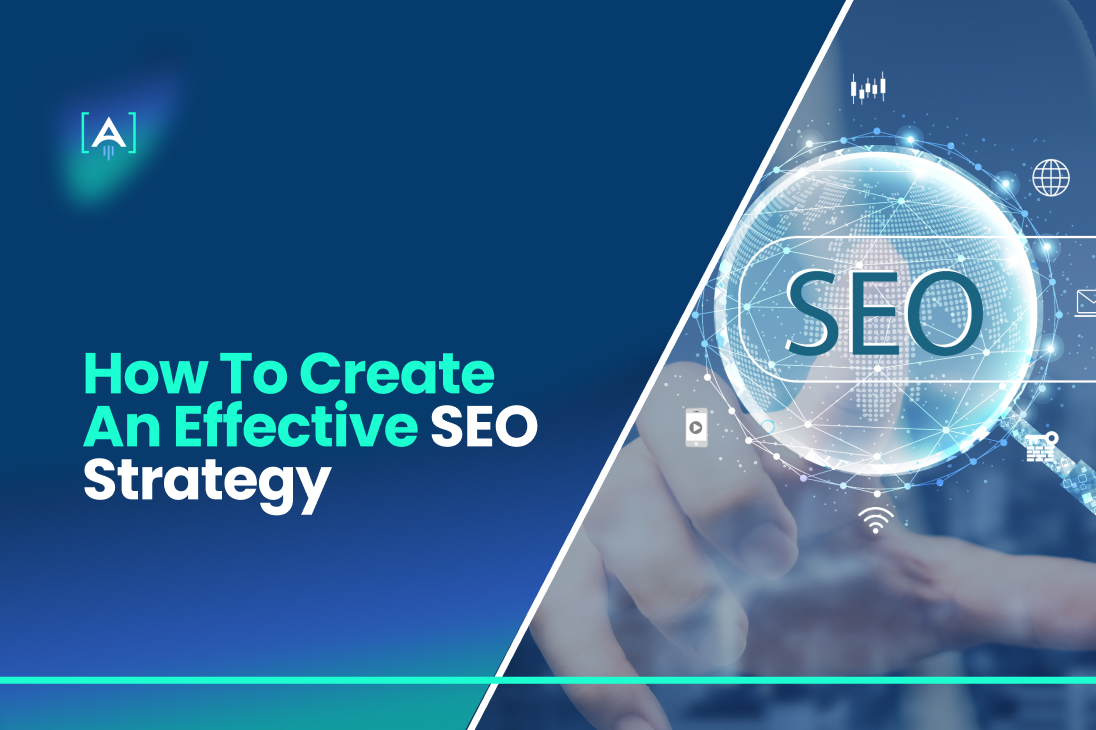Do you know the best thing about the right and winning SEO strategies for your website?
It can help me attract more website visitors, get more leads, and ultimately increase my sales- it will be your answer.
And I will say: you are absolutely right! But let me be more specific: getting more traffic and attracting visitors are the second-best things.
The best thing is that the right SEO strategies can help you be a great expert in your niche in the eyes of your audience and Google algorithm. So you can sleep peacefully, knowing that your website is in good hands.
It will not take you much time or effort to maintain such a strategy once you’ve created it. You’ll just need to check whether everything works as planned from time to time and make changes if required.
It’s not about getting traffic; it’s about getting relevant traffic that is most likely to convert into customers or clients. Our SEO agency is here to help you achieve that.

But do you know the worst thing about wrong or even missing SEO strategies for your website?
It will make my website invisible on the internet,- you will reply.
And again, you will be right! If you’re not using SEO or you’re doing it wrong, all your digital marketing efforts will be in vain.
You can have the best product or offer the most fantastic service, but if no one knows about it, you won’t make any sales.
Let’s go deep into all the actions you should take to effectively create an SEO strategy that will assist you in achieving all your business goals.
Do Competitive Research to Understand the Market, the Competition, and What Type of Content Is Already Ranking

This is incredibly important because it allows you to understand the playing field. It’s crucial to know what you’re up against and what type of content is already resonating with your audience.
Once you have this information, you can start developing your own strategy-SEO for how your site will rank in search engines both for off-page and on-site SEO.
What does it mean by deep research? It is necessary to understand the following:
- What is your audience searching for
- What kind of content is already ranking
- Who is your competition is
- What type of content they’re creating
- How can you make better content than what’s already out there
They say there is always someone better than you. But the question is: how much better? If they are only a little better, you can still beat them. The thing is not just to be better in quantitative ways but to be qualitative and creative as well.
Your content has to be better and different to rank higher than your competition. And this is where most people make a mistake when trying to improve their search engine optimization. They create either too similar or worse content than what’s already out there.

So you need to find the golden equilibrium that will make your content stand out, be better, and offer something new while still being relevant to your audience.
This is not an easy task, but it’s definitely doable with a little bit of creativity and hard work.
What comes after? Let’s see.
Do Keyword Research to Discover Opportunities for Ranking in Search Engines

Keyword research SEO is like a treasure hunt. You need to explore and find the right keywords that you can rank for without too much difficulty.
And by saying “right keywords,” we mean those relevant to your business, have enough search volume and aren’t too difficult to rank for.
One effective way to achieve this is through competitor keyword research. Thus, you can identify opportunities to rank for similar terms that may have less competition but still offer significant search volume.
Unfortunately, most people mistake targeting keywords that are either too difficult or have too little search volume. This can also lead to SEO keyword cannibalization.
And this is where they fail. If the keywords you’re targeting are too difficult, you will never be able to rank for them, no matter how much effort you put in.
On the other hand, if the keywords you’re targeting have too little search volume, you will get very little website traffic, even if you manage to rank for them. So, it’s crucial to find the right balance between these two factors and focus on search intent optimization to ensure the keywords align with what users are truly searching for.

The best option for doing keyword research is to use tools like Google Keyword Planner, Google Trends, and Google Search Console.
Here are some types of keywords that you need to pay attention to during your keyword research:
Long-Tail Keywords

Long-tail keywords are usually 4 or 5 words long, and they are more specific than shorter keywords. They have less search volume, but they are easier to rank for, and they usually convert better.
Example: “the best SEO services agencies”
Short-Tail Keywords

Short-tail keywords are usually 1 or 2 words long, and they are more general than specific long-tail keywords. They have more search volume but are also more challenging to rank for.
Example: “SEO agencies”
Brand Keywords
Brand keywords are those that include the name of a brand. They are usually quite easy to rank for because there is not a lot of competition.
Example: “Azarian Growth Agency SEO services”
Local Keywords
Local keywords include the name of a city, state, or country.
Example: “SEO services Los Angeles”
Let’s go on.
Do an SEO Financial Plan to Understand the Resources You Need and Make Sure Your SEO Strategy Is Profitable

After you’ve done your research and you know what keywords you want to target, it’s time to create a plan and allocate the necessary resources to make it happen.
For the most part, SEO is a long-term game, including on-page seo vs off-page seo. It might take months or even years to see search engine results.
This is why most businesses give up before they even get started. They don’t have the patience or the resources to wait for results.
But if you want to succeed with white hat SEO, you should have a plan and be willing to invest the time and resources required to see results. White hat SEO involves using ethical strategies, focusing on value and quality of your website.
The first step is to create a budget. You need to understand how much you’re willing to spend on the SEO process and make sure that it’s profitable.
Once you have your budget in place, you can start building out your successful SEO strategy and allocating the necessary resources to make it a success.
That might include things like hiring an SEO expert or agency, investing in training or education for your team, and even outsourcing some of the day-to-day tasks to professionals who may help you achieve your goals more quickly.
Ultimately, the key to a successful SEO strategy is to be patient and invest in the resources you need to get results over time.
If you do that, you’ll not only drive more conversions and sales for your business, but you’ll also establish yourself as an authority in your industry.
Do Paid Ads to Get in Front of Your Customers When They’re Ready to Buy

Paid advertising is a great way to get in front of your customers when they are ready to make a purchase. It’s also a great way to test out different keywords and see which ones convert the best.
The best ads are relevant to the user’s search query. We all are also searchers, and we know how annoying it is to see irrelevant ads.
Let’s keep in mind the following tips when creating paid ads:
- Keep your ads relevant to the user’s search query.
- Make sure your ad is placed in front of the right audience.
- Test different keywords and see which ones convert the best.
- Constantly test and optimize your ads for the best results.
- Make sure your ad copy is clear and concise.
- Target your ads to the right country or region.
- Test different landing pages to see which ones convert the best.
- Make sure your website is mobile-friendly.
Develop Landing Pages to Support Your SEO Goals and Increase Conversion Rates

A landing page is a specific page on your website designed to convert visitors into leads or customers.
It’s important to have a separate landing page for each campaign or keyword you want to target.
This is because each campaign or keyword strategy should have a specific offer or message relevant to the users’ search query and search intent.
Landing pages are essential for SEO because they help you rank for specific keywords and improve your conversion rate. Your landing pages should look professional, with optimized mobile SEO, and load quickly.
And call-to-action; don’t forget about this essential element! The main goal here is to get the user to take action to lead to a conversion.
Some of the most effective call-to-actions are “Buy now,” “Download now,” “Get started now,” or “Request a quote.”
It’s also important to track your landing pages and see how they perform. You may use Google Analytics to track your landing pages and see which ones get the most organic traffic and conversions.
Make a Content Plan and Editorial Calendar to Ensure the Publishing of Relevant Content at the Right Time

Everyone knows that planning is important, but do you know why planning is important for SEO?
The answer is simple: it helps you publish the right content at the right time. And this right content and the right time can become the deciding factor in your SEO success.
If you want to be successful with search engine optimization, you need to make sure that you’re constantly publishing relevant and fresh content. Freshness for SEO is as essential as it’s for food or news on TV.
This is why most businesses create an editorial calendar. It’s a way to plan and organize your content correctly.
There are numerous factors that go into creating an effective editorial calendar for your content marketing, but one of the most important is understanding your audience and what kind of content they want to see.
You also need to make sure that you publish content regularly. This doesn’t mean you need to have a new blog post every day, but you should aim for it at least once a week.
And finally, you need to make sure that your content is shareable and engaging. No one wants to read boring or irrelevant content.
Remember, keeping fun and creative should be your top priority when creating an editorial calendar. Don’t be too serious all the time!
Improve and Update Your Content Regularly to Keep It Fresh and Relevant

One of the key factors that go into determining how well your content ranks in a search is how often it’s updated.
If you have a blog or other type of website where you’re publishing regular updates, make sure you’re taking the time to go back and improve old posts, update them with new information, or remove outdated content that is no longer relevant.
This can help you not only keep your content ranking well but also give potential visitors a better experience when they come to your site. After all, no one likes to visit a website that is out of date or doesn’t reflect the latest information on a topic.
Here are 3 tips to help you improve and update your content effectively:
- Work through older posts on a regular basis and make updates or improvements as needed. This can include things like removing outdated information, updating statistics or other data points, rewriting pieces to make them more engaging or relevant, adding new images or multimedia content, etc.
- Analyze the performance of your content over time, and look for trends or patterns that can help you improve your SEO strategies. For example, if you notice that a particular post is consistently bringing in a large number of new visitors each month, take the time to go back and update it with fresh information or more up-to-date data.
- Consider using SEO tools like content audits and competitive analysis to help you identify gaps in your content or areas where you can improve and stand out from the crowd.
Leverage the Power of Newsjacking to Boost Your SEO Results
Another effective strategy for improving your SEO results is to take advantage of newsjacking. Newsjacking involves leveraging the popularity of a current event or trend in order to increase exposure and engagement around your own content.
For instance, in case you have a blog post that covers an important news story or topic, consider doing some additional promotion around it by reaching out to influencers and journalists in your industry, sharing it on social media, or creating a paid advertising campaign.
This can help you tap into the ongoing popularity of that topic and get more people engaging with your content.
At the same time, newsjacking also gives you an opportunity to generate more traffic from searches by using relevant keywords, topics, and themes in your content marketing.
By staying on top of current trends and news stories, you can be sure that your content is always relevant, timely, and engaging – which in turn boosts its SEO power.
If you’re looking for ways to improve the impact and effectiveness of your SEO strategy, consider incorporating newsjacking into your overall approach.
With the right tactics and techniques, you can boost your SEO results and bring more traffic and engagement to your site.
Use Case Studies to Showcase Your Successes and Build Trust with Potential Customers
Another great way to improve your SEO results and drive conversions is to use case studies to showcase your successes.
Case studies are a powerful marketing tool that can help you not only build trust with potential customers but also convince them of the value and effectiveness of your products or services.
By highlighting real-world examples of how your products or services have delivered results for other customers, you can show potential buyers that you’re the right choice for their needs.
In addition to driving conversions, case studies can also be a powerful tool for improving your SEO performance.
Case studies are typically focused on specific topics or keyword phrases, which means they can be a great way to increase your visibility in search and attract more website traffic.
They are also a great option to build backlinks and increase your domain authority, as other sites are more likely to link to useful, informative content that provides real value for their readers.
Focus on Content Design

Design matters in every aspect of marketing, and content is no exception. When it comes to improving your SEO results, focusing on the design of your content can make a big difference in how well it performs.
How? Well, the way your content looks can greatly impact how it is perceived by both readers and search engines.
For example, if you publish lengthy, in-depth articles that are well-researched and formatted with plenty of headings, images, and other visual elements, this will help to engage readers and make your content more scannable.
Incorporating SEO image optimization ensures that your images are properly tagged with relevant keywords, improving your page’s overall SEO.
In turn, this can greatly improve your engagement metrics, such as bounce rate and time spent on a page, which both play a role in how your content is ranked by search engines.
On the other hand, if you publish short, poorly formatted articles with little to no images or other visual elements, this can hurt your SEO results.
Readers are less likely to engage with your content and stay on the page for long periods of time, which can negatively impact both engagement metrics and search rankings.
Additionally, the design of your content can also affect how well it is adapted for different devices and screen sizes.
For example, if you have a responsive site that automatically adjusts to fit the size of the device being used, this can help ensure that your content looks great and provides a good user experience on any type of device.
Given these factors, it is clear that focusing on the design of your content is an important part of improving your SEO results.
To do this effectively, consider hiring a professional designer or investing in high-quality tools and resources that can help you create content that stands out from the competition.
With the right approach, you can boost your SEO performance and drive more traffic, engagement, and conversions for your site.
Don’t Forget About Pillar Pages and Spokes

Having a strong SEO strategy also involves focusing on pillar pages and spokes.
Pillar pages are detailed, in-depth guides that cover a specific topic or industry in depth. They act as foundational content for your site, and they can drive traffic through their links to other related content on your website.
Meanwhile, spokes are short, highly valuable pages that link back to your pillar page. They offer supporting facts or additional information on a specific topic, making them ideal for internal linking to other blogs and publications in your industry.
For instance, if you run a business that sells home improvement products, a great pillar page could be something like “The Ultimate Guide to Renovating Your Home.”
In this guide, you can cover topics like budgeting for home renovations, choosing the right materials and contractors, and much more.
To help drive traffic to your Pillar page, you can also create spokes on topics like “Selecting the Right Kitchen Countertops” or “Renovating Your Bathroom on a Budget.” These smaller, related pages will link back to your Pillar page, helping it to rank in search results and bring in even more traffic.
If you want to create a solid SEO strategy that works and drives conversions, it’s essential to focus on pillar pages and spokes.
With the right approach, you can tap into your target audience and build a strong online presence that helps you grow your business over time.
Use the Skyscraper Strategy to Build High-Quality Links
The Skyscraper strategy is a popular method for building high-quality links and earning top rankings in search results.
This strategy involves finding successful content that is already ranking well for your target keyword and then creating something even better. You can do this by either improving upon the existing piece or coming up with new content ideas, angles, and insights on the topic at hand.
Once you have your “better” content in place, the next step is to reach out and build high-quality links from relevant websites and publications.
This can be done either by directly contacting other website owners and marketers or using guest posting and blogger outreach to get your content in front of the right audiences.
With a Skyscraper strategy, it’s important to focus on quality over quantity. You might not earn hundreds of links with every piece of content you create, but the links you do earn will be from authoritative, relevant websites. And that can make a big difference in your search rankings.
Thus, if you want to build effective SEO strategies that can drive results, it’s important to focus on the Skyscraper technique.
By creating high-quality content and earning relevant links, you may not only rank higher in search results but also establish your business as a thought leader in your industry.
Use Data-Driven Strategy

SEO is a constantly evolving field, and the best strategies and tactics are those that are grounded in data.
By using data-driven SEO tools and resources, you can stay on top of the latest trends, identify new opportunities for growth, and improve your SEO results over time.
One of the best options to do this is to leverage a variety of SEO analytics tools.
For example, you can use tools like Google Analytics to track and analyze your website traffic, including the keywords that are driving the most search engine traffic to your site.
In addition, you can also use tools like Ahrefs to monitor competitor activity and measure their performance against your own.
This type of data-driven analysis can give you a better understanding of where you are at in the market and what, if any, improvements can be made to improve your own performance.
Another key aspect of data-driven SEO is A/B testing. By running A/B or multivariate tests on your content, you can determine what works best in terms of user engagement and search rankings.
For example, you might test different versions of a piece of content, varying the length, tone of voice, use of images, or other elements.
This type of testing can help you identify the most effective content strategies and tactics for improving your SEO results over time.
Overall, using data-driven tools and strategies is a key part of optimizing your SEO results.
Whether you are working with an experienced team of professionals or taking an in-depth approach on your own, leveraging data and analytics can help you stay ahead of the curve and achieve SEO success.
Start Technical SEO Optimization After the Website Is Launched

Technical SEO optimization is making sure that your website is set up correctly to be indexed and ranked by search engines.
This includes optimizing your website structure, code, and content so that search engines can easily understand and crawl your website.
Let’s visualize the indexing and crawling process. Imagine that a search engine is a spider that needs to crawl through your website to index all of its web pages.
If your website is not set up correctly, the spider might get lost and never find all of your pages. This will result in poor indexation and a lower website ranking.
Remember, you are not creating a labyrinth for the search engine spider! You want to make it as straightforward as possible for them to find and index all of your pages. That spider is not your enemy!
Technical SEO optimization includes a lot of different elements, but some of the most important are:
- Optimizing your website structure so that it is easy to navigate and crawl
As we said before, your website structure is like the skeleton of your website. It needs to be well-organized and easy to understand so that search engines can easily index all of your pages. Keep this in mind while thinking of a strategy for your on-page optimization.
- Creating a sitemap and submitting it to search engines
A sitemap is a list of all the pages on your site. It is used by search engines to index all of your website’s pages. Submitting a sitemap to search engines is one of the best options to make sure that they index all of your pages.
- Using the correct Meta tags and metadata on your website
Writing a meta title or meta description that is too long or uses the wrong keywords can result in poor click-through rates and lower rankings. Here, we have strict rules that need to be followed to create compelling title tags and meta descriptions.
- Optimizing your website for page speed
Well, a slow website? Like serious? Today?
If your website takes more than 3 seconds to load, you’re losing a lot of visitors. Nobody will tolerate a website that runs slowly. Thus, please, for the love of all that is good, optimize your website for page speed.
- Ensuring that your website is mobile-friendly
People nowadays use mobiles more than desktop computers to browse the web. That’s why it’s important to make sure that your site is mobile-friendly.
Not to mention, Google now uses mobile-first indexing, which means that they index and rank websites based on their mobile version.
- Removing dead links
A dead link in your website is like a sign that says, “This website is not maintained.” It doesn’t look good, and it can result in a bad user experience. If you have any dead links on your website, remove them or redirect them to the correct page.
- Removing duplicate content
Google doesn’t like duplicate content (and neither do any of us). If you have any pages with duplicate content, remove or rewrite them.
- Fixing broken links
Broken links are like dead links, but even worse. Not only do they not work, but they also give the user an error message.
This is a bad UX SEO, and it can result in a high bounce rate. If you have any broken links on your website, make sure to fix them as soon as possible.
Start an Off-Site Strategy to Increase Your Website’s Ranking in SERP

After the hard work, another important part is the off-page SEO strategy. The main goal of an off-site SEO strategy is to increase your website’s authority.
This can be done by getting high-quality backlinks from other websites. A backlink is basically a link-building process that points from one website to another.
For example, if I have a blog about cats and a link to your website about dogs, that would be considered a backlink.
The number of backlinks you have is significantly determining your website’s authority. The more backlinks you have from high-quality and authoritative websites, the higher your website will rank in SERP, knowing SERP features.
But getting backlinks is not an easy task. You need to earn them. The best option to do this is by creating great content that people will want to link to.
If you create informative, well-written, interesting articles, people will be more likely to link to them.
So everything is clear and useful, but how can we ensure that our website’s articles are link-worthy?
By following these tips:
- Write for your audience first, not for the search engines.
- Make your articles easy to read and understand.
- Use images, videos, and infographics to break up your text and make your articles more visually appealing.
- Write attractive and catchy headlines.
- Use digital marketing by promoting your content on social media platforms and other websites.
- Add new content regularly.
You may think,- so many things to do, so much time to spend, and so many risks to take!
But wait, is there any success without taking risks? The answer is No. So, to achieve something great, you need to put in some extra effort and be patient enough to see the result.
If you are not sure where to start, consider getting help from a professional and experienced digital marketing agency such as Azarian Growth Agency.
Azarian Growth Agency is a leading SEO Agency, helping businesses grow online for years. With our expert team of SEO specialists and digital marketers, we can help you create effective on-site and off-site SEO strategies that will increase your website’s ranking in the SERP.
So don’t waste any more time while your competitors are taking full advantage of their online presence! Contact us today and start growing your business online!

